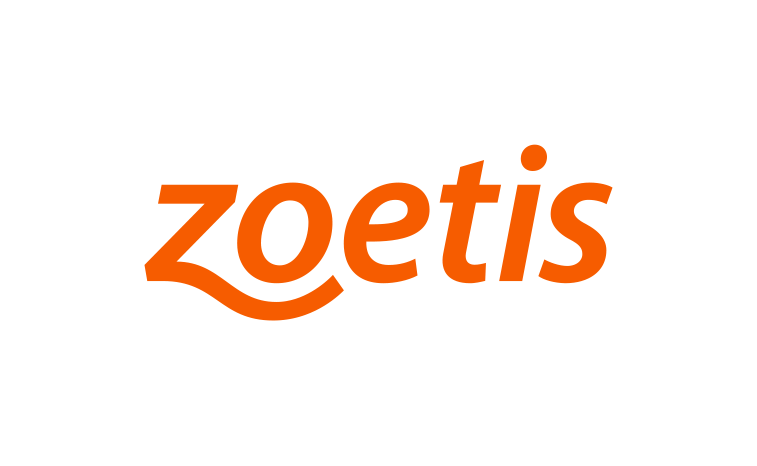



Ready to take on Mycoplasma hyopneumoniae?
Zoetis introduces Mhp Guardian – the first Mhp management program tailored to your goalsConsidered one of the “big three” respiratory diseases, Mycoplasma hyopneumoniae (Mhp) is a drain to U.S. pork producers on several fronts. Like porcine reproductive and respiratory syndrome virus (PRRSv) and influenza, its impact can be significant in the areas of health, performance, productivity and efficiency.1
Pigs of all ages are susceptible, but they typically become infected in the first few weeks of life either from the sow or from other pigs after commingling.2
What to expect with Mhp-positive herds1
- Decreased average daily gain – 0.08 lbs./day or 4.4%
- Decreased feed efficiency – 0.02 lbs. F:G or 0.7%
- Increased medication costs – $1.21/pig
- Increased mortality – decreased pigs/sow/year by 0.21
“Pigs with mycoplasma pneumonia will have a dry hacking cough, and as a population, they become very lethargic and lack the activity level of a healthy group of pigs,” said Dr. Dave Baumert, senior technical services veterinarian with Zoetis U.S. Pork. “Subsequently, we see decreased average daily gain and feed efficiency. In addition, the producer is paying for increased medication costs and higher facility costs because Mhp-infected pigs will take longer to reach their target market weight.”
Mhp-positive pigs average 9.2 pounds lighter and on average need six days to reach market weight. Overall, the economic impact results in a loss of $2.00 to $5.00 for Mhp-positive pigs.1
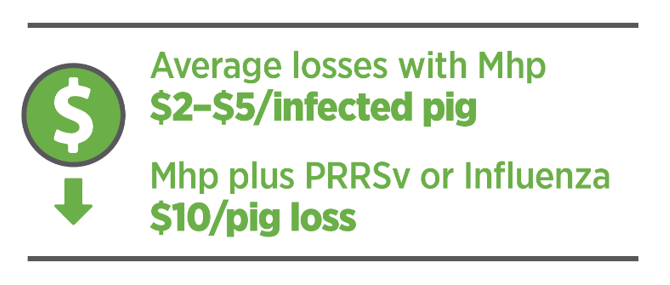
Research has shown that Mhp in combination with other pathogens results in performance losses and costs greater than the additive costs of each pathogen.2 For example, the actual costs of a PRRSv and Mhp coinfection, at $9.69 per head, were 1.5X greater than the additive costs of uncomplicated PRRSv and Mhp. Likewise, the additive cost of uncomplicated Mhp and influenza A virus of swine (IAV-S) was $3.86 per pig, but the impact of IAV-S and Mhp together was $10.12 per pig.2
Setting Mhp goals
“The health of the breeding herd is often the best predictor of the health of the downstream pig flow, so we want to start managing Mhp in the sow herd,” said Dr. Baumert. “The breeding herd management program can be a relatively simple control program that allows us to produce gilts that are no longer shedding mycoplasma to suckling piglets. When we do that, we can wean groups of pigs that have a lower incidence of mycoplasma. Research shows we will then produce groups of finishing pigs where mycoplasma has less of a negative effect, because we've weaned pigs in a healthier state.”
Baumert said alternatively, managing mycoplasma in some operations could swing to the extent of a full elimination program from the breeding herd. This would utilize effective antibiotics and vaccines and a gilt-management program. Once Mhp is eliminated from the breeding herd, then it’s possible to consecutively wean groups of negative pigs and move them to finishing without the threat of mycoplasma.
“This is certainly the ideal program in many situations,” said Dr. Baumert. “However, every operation is different, so it’s important to evaluate the financial and operational implications and then set your goals for what’s realistic given the conditions at each farm.”
A personalized Mhp-management program
Zoetis has introduced Mhp Guardian, the first consultative, comprehensive Mycoplasma hyopneumoniae management program that moves Mhp-positive herds into a negative or more stable status and helps keep them there.
Mhp Guardian offers a step-by-step approach that guides a producer through a herd status identification process and delivers a customized road map for either a control or elimination program, depending on a producer’s specific objectives.
The Mhp Guardian program has four steps – the first step is to establish herd status using STOMP PLUS® (Zoetis diagnostic consultative service) as:
- Category 1 – Positive uncontrolled – breeding herds are either going through an Mhp outbreak or status is unknown
- Category 2 – Positive controlled – Mhp is not present in the first parity (P1) sows, but the herd is serologically positive. This status should be considered the goal for producers who do not pursue elimination and decide to control Mhp.
- Category 3 – Provisionally negative – Mhp is not detected in the breeding herd, but the herd may be serologically positive. These herds have completed a whole-herd elimination program but can be further categorized based on vaccination (yes/ no) protocol practices.
- Category 4 – Negative – Mhp is not detected in any type of sample, so the population is considered serologically negative.
“The second step is to assess intervention options. Using a risk-management model, we determine whether control or elimination is the best fit for your operation and then help build a customized, practical plan for your operation,” said Dr. Eva Jablonski, senior technical services veterinarian with Zoetis U. U. Pork. “Step three is implementing those intervention strategies – this is the nuts and bolts of getting it done. We'll work with you to develop a customized roadmap, taking into consideration system constraints, pig movement, etc. Lastly, step four is monitoring intervention outcomes. We'll work with you to develop a refined diagnostic plan to ensure the intervention was successful and to continue measuring stability.”
Four steps to stability
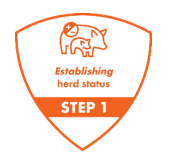
Step 1: Establishing herd status Objectives
- Identify the cost and magnitude of Mhp on your operation
- Understand Mhp-specific status classifications and criteria
- Utilizing STOMP PLUS services, collaborate to develop a robust and tailored diagnostic plan
- Implement diagnostic plan and receive STOMP PLUS technical analysis, easy-to-understand reports and recommendations
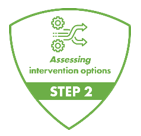
Step 2: Assessing intervention options
Objectives
- Identify Mhp herd stabilization goals and evaluate intervention options based on farm environment and financial impact
- Compare and assess intervention options based on herd-closure length, medication requirements and cost, and expected success rates
- Finalize intervention strategy decision and understand resources available to you and your operation
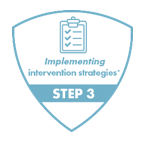
Step 3: Implementing intervention strategies*
Objectives
- Develop detailed intervention implementation plan
- Communicate with and align all internal stakeholders, outlining milestones, timelines and responsibilities
- Work with a Zoetis representative to identify additional training and implementation support needs
- Conduct training, implement intervention strategy, track progress
*These are general guidelines only. Producers should consult with their herd veterinarian.
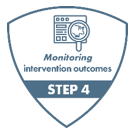
Step 4: Monitoring intervention outcomes
Objectives
- Ensure continued stability or negative state over time
- Assess new or additional intervention outcomes
- Develop and implement a customized clinical disease monitoring plan for the downstream pig flow, followed by a targeted diagnostic testing plan if clinical signs are observed
“STOMP PLUS – which plays a critical role in Steps 1, 3 and 4 – is our unique consultative diagnostic program that is focused on identifying and monitoring specific swine pathogens, in this case Mhp,” said Dr. Jablonski. “Any animal health company can pay for diagnostics. What we offer is a diagnostic sampling plan based on the specific question you want answered, consultative interpretation of results and highly visual diagnostic summaries. This allows veterinarians to spend less time preparing and more time communicating their herd health information to producers.”
Your animal caregivers will be supported throughout the program by Zoetis on-farm pork production specialists and technical services team, who have extensive, real-world Mhp management and research experience.
Zoetis invites you to take the first step to get from here to there with Mhp Guardian. To learn more about the Mhp Guardian four-step program, contact your Zoetis representative or visit zoetispork.com.
| References | ||||
|---|---|---|---|---|
| 1 Yeske | ||||
| (2016) | Mycoplasma hyopneumoniae elimination | AASV Annual Meeting Proceedings, pg. 376-380. | ||
| 2 Haden, C., T. Painter, T. Fangman, D. Holtkamp. | ||||
| (2012) | Assessing production parameters and economic impact of swine influenza, PRRS and Mycoplasma hyopneumoniae on finishing pigs in a large production system. | AASV Annual Meeting. p 75-76. |








